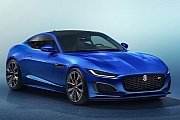history
Jaguars are elusive, carnivorous creatures that roam South American rain forests. They can be easily recognized by their distinct black speckled fur with spots larger than those of a leopard or cheetah. Such information would be most welcome in a National Geographic show but we don't work for them. We love animals but cover cars and this is all about the wheeled Jaguar.
A sight not as rare as it used to be, Jaguars appeared in 1922 under a different company name and profile. Founded as the Swallow Sidecar company by William Lyons and William Walmsley, the company later dropped the production of sidecars to take on coach building that would eventually lead to the launch of the first Jaguar automobile in 1932. Until 1945, all Lyons & Walmsley made cars bore the SS initials, a reminder of the company's side-car making roots, when the lettering was dropped because of resemblances to WWII nazi troops labels. Jaguar was picked as the new name.
During the pre-Jaguar period, the company produced multiple models, beautifully styled cars that garnered as much acclaim as they did criticism. Indeed, some voices insisted that Jaguar was more about glam and style rather than pure performance and reliability. Headquartered in Coventry, Great Britan up to this day, the main Jaguar plant dealt more with bodywork design and assembly rather than going through all car-production stage. The engines and chassises were supplied by the Standard Motor Company while the first were later modified to fit Jaguar designs by William Heynes and Harry Weslake, two racing enthusiasts and passionate engine developers.
After having build a number of luxurious saloon cars throughout the 30's, such as the 1932 SS1 and the sporty SS90, Jaguar amazed the automotive industry with the launch of the XK120, the fastest production car at the time. Sporting a 3.4 liter engine capable of delivering some 180 hp, the XK could reach a top sped of over 125 mph and accelerate from 0 to 60 in less than 5 seconds. Its sheer performance, affordability and sporty slim oval-shaped grille turned the car into an icon. The Jaguar had finally smiled, displaying a wonderful row of competition-puncturing fangs.
Sparking interest in other countries as well, the XK 120 has enjoyed a great deal of popularity having been built in over 10,000 units and becoming Jaguar's first export model. Upgrades of the 120 followed withe the XK 140 and 150.
During the 50's, Jaguar shifted emphasis on building large saloon cars. The Mk VII was the first of a completely new line-up. Despite having been powered by the acclaimed XK engines, the new vehicles were not as successful. the Mk ii however, a smaller and differently styled saloon proved otherwise, becoming Jaguar's second best selling car at the time, having been produced in some 123,000 units.
By the time the 60's came, Jaguar had already build a strong reputation that was further strengthened with the launch of the ferocious E-type. Officially revealed at the Geneva Auto Show in March 1961, the E-type was the ultimate eye-candy and record breaker. Beautifully styled and incredibly fast, the car could reach an amazing 150 mph. Heir of the C and D-type legacy, the new model was unlike anything the world had seen.
The E-type was more technology improved than its predecessors, sporting an overhead cam engine, four wheel disc brakes and independent rear suspension, features that have turned it into a champ car and racing track nightmare for Ferrari who has lost several times against the British producer.
After having been built in over 70,000 units, production of the E-type ceased in 1975 when it was replaced by the not so successful XJS. William Lyons' retirement in 72' was a blow for the company who could not rise to the standards set by its founder. It was save from bankruptcy by the Leyland company. By 1984, Jaguar bought its way out but failed to make an impressive comeback since it had lost its former appeal. 1989 was the year when Jaguar became part of the Ford Motor Company alongside British Land Rover. Ford's tutelage only lasted until 2008 when Jaguar and Land Rover were sold to Indian group Tata Motors. Jaguar's current line-up consists of luxury sedans such as the XJ models, the executive and fresh XF as a replacement of the S-type, the burgeois X-Type and the sporty XK.
expand























